A new study shows how massive young stars create the kind of organic molecules that are necessary for life.
A team of researchers used an airborne observatory to examine the inner regions around two massive young stars. Along with water, they found things like ammonia and methane. These molecules are swirling around in a disk of material that surrounds the young stars.
That material is the same stuff that planets form from, and the study presents some new insights into how the stuff of life becomes incorporated into planets.
The title of the study is “High-resolution Infrared Spectroscopy of Hot Molecular Gas in AFGL 2591 and AFGL 2136: Accretion in the Inner Regions of Disks around Massive Young Stellar Objects.” The lead author is Andrew Barr, a doctoral candidate at Leiden University in the Netherlands. The study is published in The Astrophysical Journal.
“This study is very exciting as it demonstrates the power of infrared observatories to sense the presence of simple organic compounds that were important for the origin of life on Earth, and possibly other planets.”
Klaus Pontoppidan, project scientist for the Webb telescope at the Space Telescope Science Institute.
SOFIA (Stratospheric Observatory for Infrared Astronomy) is the telescope that did the work for this study. SOFIA is a partnership between NASA and the DLR (German Aerospace Center.) It’s a converted Boeing 747SP that carries a 2.7-meter (106-inch) reflecting telescope that sees in the infrared. The Earth’s atmosphere blocks infrared, so SOFIA’a position in the stratosphere—between 38,000 to 45,000 ft— allows it to observe in the infrared. It’s also mobile and can be used almost anywhere in the world.
The team of researchers employed SOFIA to look into the inner regions around two young stars. The swirling disk-shaped clouds held some surprises.
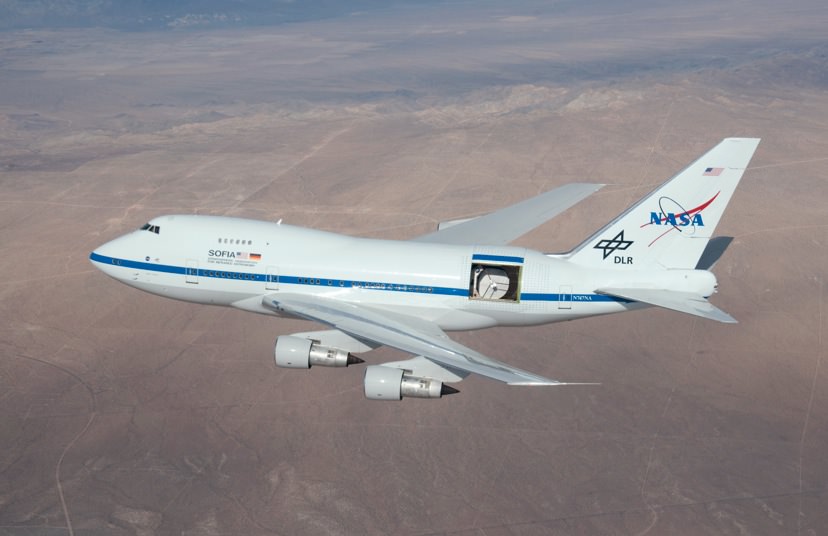
“We’re seeing many more molecular signatures than were ever seen before at these wavelengths,” said lead author Andrew Barr. “It turns out that these stars are like chemical factories churning out molecules important for life as we know it and we just needed the right kind of observations to see them.”
The infrared power of SOFIA was key in this study. When infrared light is split apart with a spectrograph, it reveals bright lines. Each of the chemical elements creates a unique line, like a chemical fingerprint. SOFIA is quite good at this, and by examining the infrared light from the two young stars with a spectrograph, the researchers were able to detect the complex molecules.
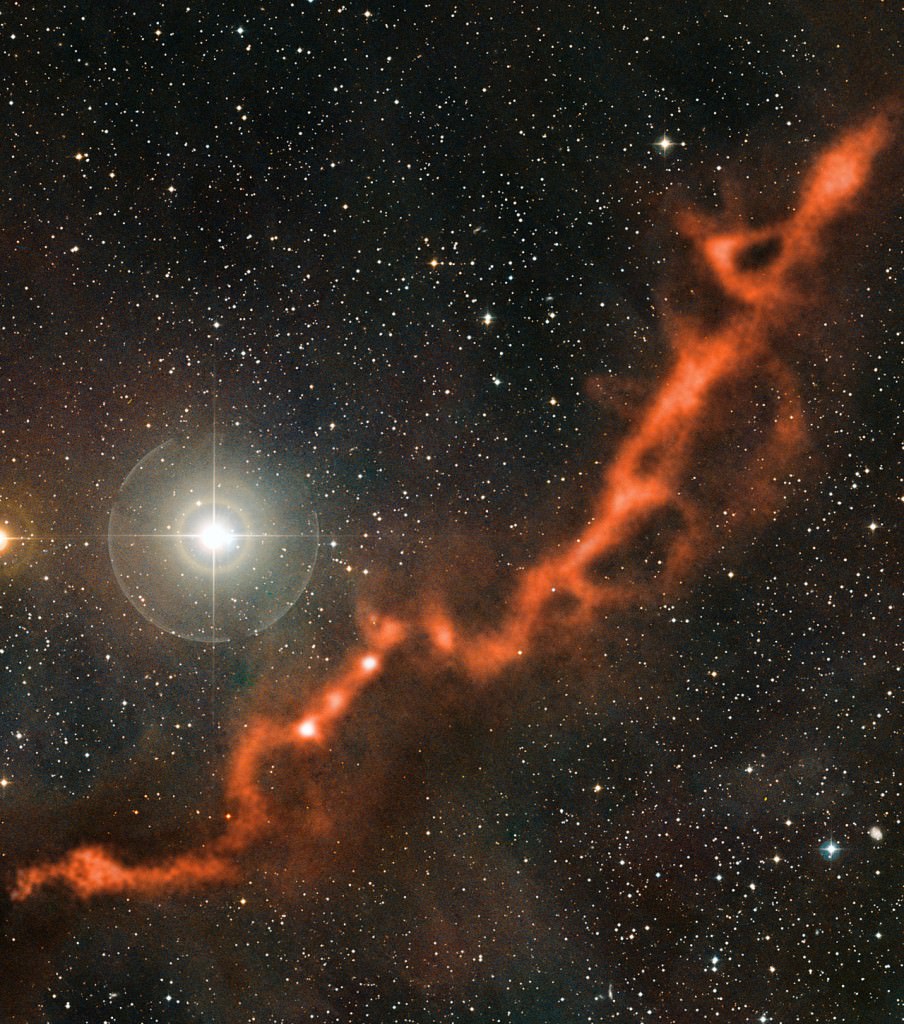
The life of a star begins in a molecular cloud full of hydrogen molecules and helium atoms. Molecular clouds are cooler and higher density than the interstellar medium, so the inward pressure of gravity can exceed the outward pressure from the cloud. At the center of molecular clouds is an infrared dark cloud, a cold dense region, which astronomers think is the precursor to a massive star.
Eventually, the inward pressure in the cloud takes over, and the infrared dark cloud becomes unstable, and collapses, forming a central protostar. The protostar is surrounded by a rotating disk of dust, like a swirling cocoon. Fusion begins, and infalling material forms a rotating heated disk. The material is heated by the young star, and this is called the hot core phase. Massive stars like the two in this study begin hydrogen fusion while they’re still accreting material.
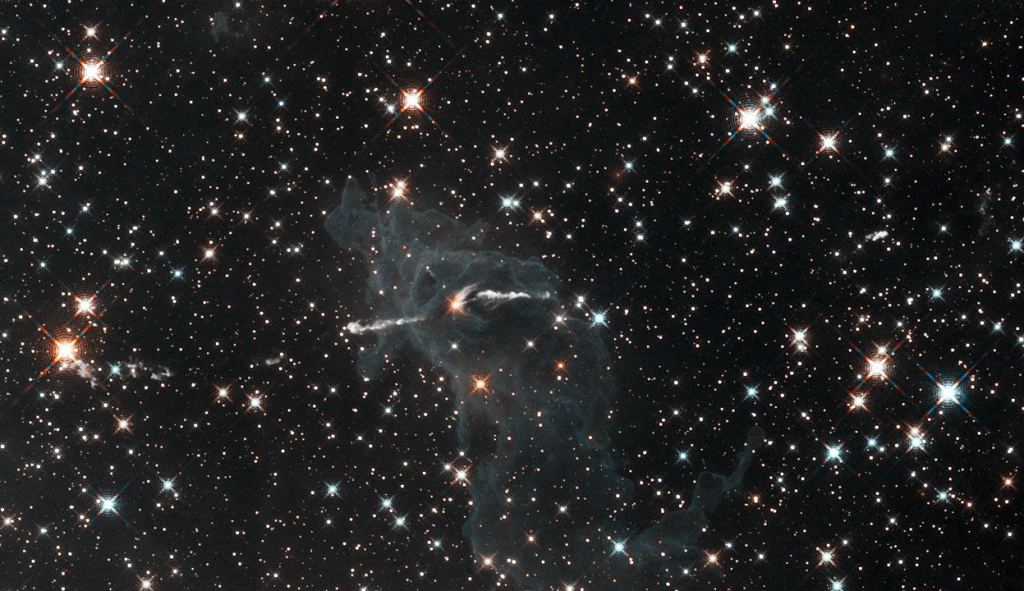
SOFIA was watching all this happening around two massive stars named AFGL 2591 and AFGL 2136. They’re both about 3,000 light-years away in the constellation Cygnus and the Juggler Nebula respectively. SOFIA found that the young stars are heating the inner disk regions from the inside out. Scientists call this the hot-core phase. All that heating is changing the nature and composition of the chemicals in the gas that surrounds the inner core. At about 50 AU from the star, and in the same region where planets will eventually form, the observatory found evidence of a veritable chemical soup: water, ammonia, methane, and acetylene. The presence of acetylene is especially interesting because it’s a pre-biotic building block for more complex organic molecules.
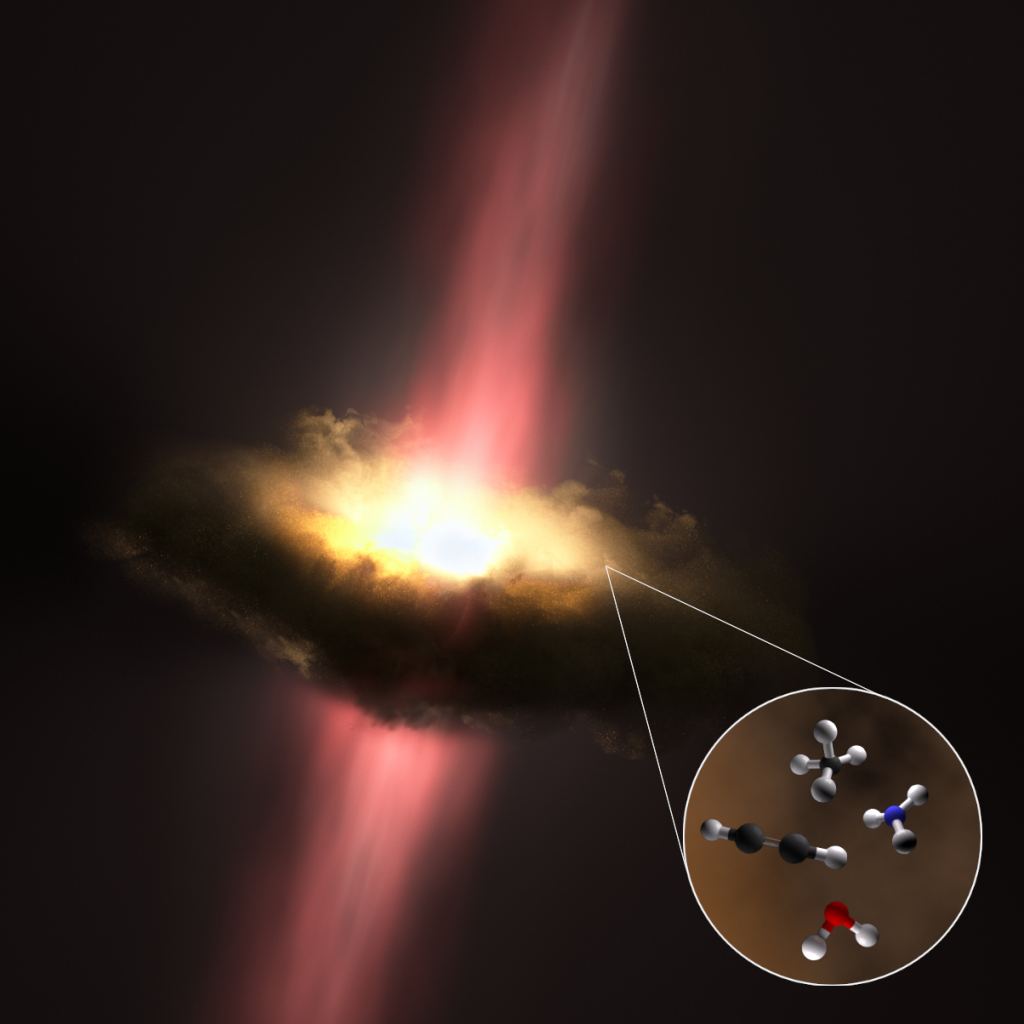
“This study is very exciting as it demonstrates the power of infrared observatories to sense the presence of simple organic compounds that were important for the origin of life on Earth, and possibly other planets,” said Klaus Pontoppidan, project scientist for the Webb telescope at the Space Telescope Science Institute. “One of the most important goals of both Webb and SOFIA is to understand the origins of stars and planets — and ultimately ourselves.”
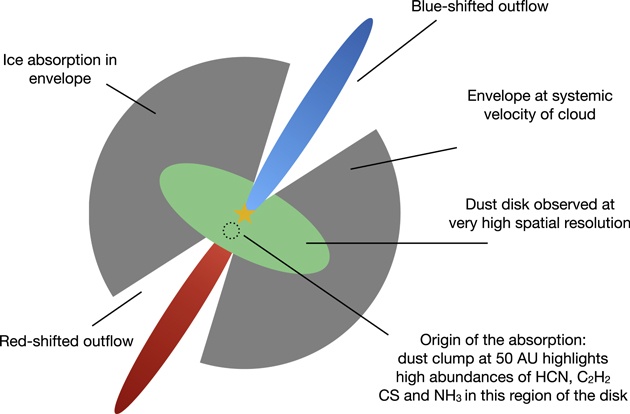
The stars in this study are much larger than the Sun—40 times larger in fact. But the results can still serve as a reference when the next, most powerful infrared telescope gets to work: the James Webb Space Telescope. SOFIA and the James Webb are both infrared telescopes, but they’re different. SOFIA can identify chemical fingerprints around bright stars, and the Webb has the power to do the same around much smaller, dimmer, Sun-like stars. So the results from SOFIA can be used to help understand weaker signals from the James Webb.
In recent years, more and more research has shown that the building blocks of life are spread throughout space. They’re present on moons like Titan, they’ve been detected on comets, and now they’ve been found in the disk of material that planets form from.
This study shows that important building blocks are created when massive stars heat their surrounding disk material. It also advances another idea: that the building blocks of life don’t require massive shocks and turbulence for their formation, as was previously thought.
More:
- Press Release: Massive Stars Are Factories for Ingredients to Life
- New Research: High-resolution Infrared Spectroscopy of Hot Molecular Gas in AFGL 2591 and AFGL 2136: Accretion in the Inner Regions of Disks around Massive Young Stellar Objects
- Universe Today: Rosetta Saw the Building Blocks of Life on Comet 67P

